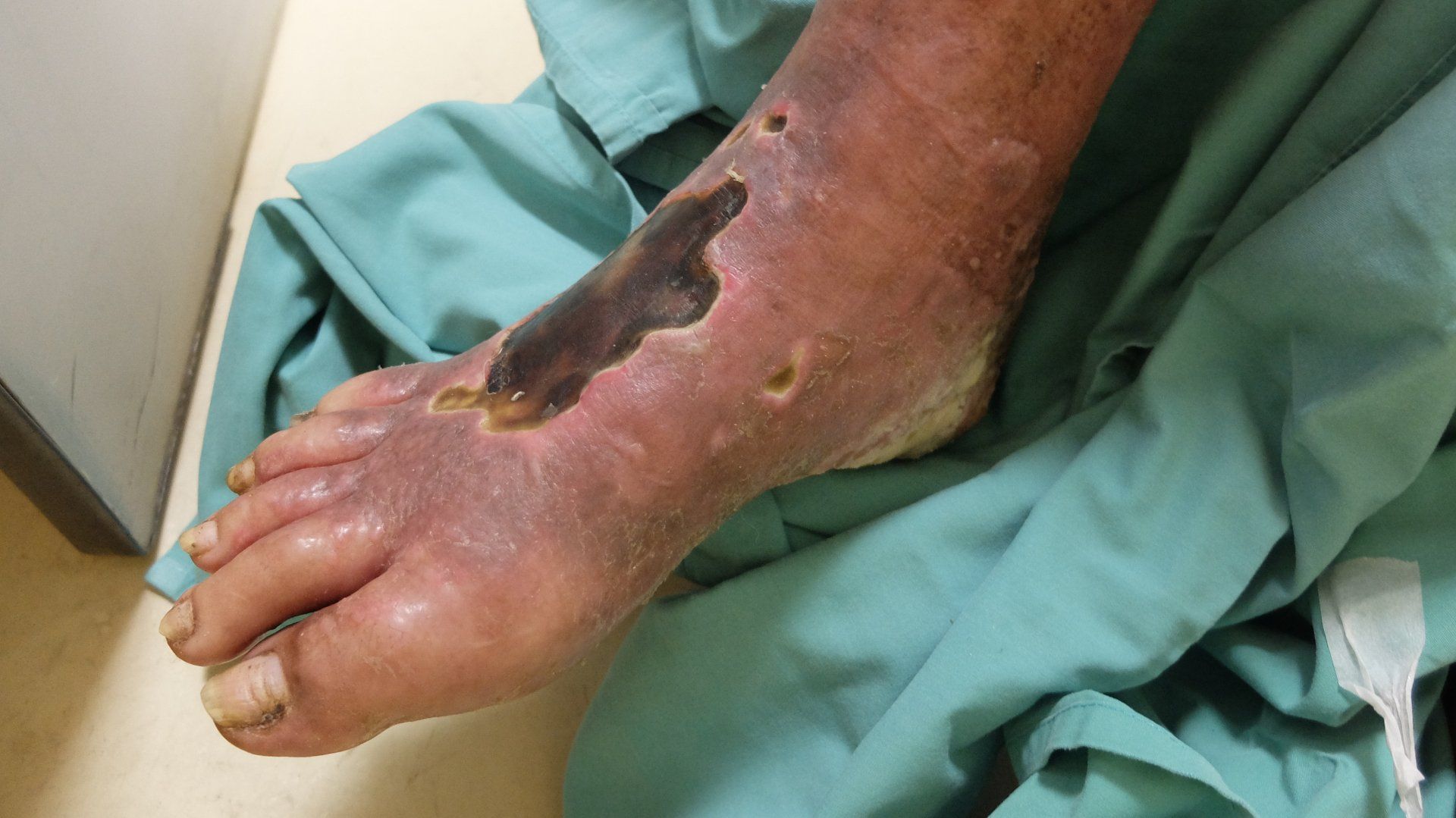Arterial Ulcers

Arterial/Ischemic Ulcers occur because of poor arterial flow to the skin and tissues. The ulcers most commonly appear in the legs. Minor trauma or a small cut in the skin may not heal because the arterial blood carries oxygen, healing factors and nutrients to the skin and underlying tissues. When the arteries are narrowed or blocked, the nutrients and oxygen cannot get to the sore to help it heal.
Symptoms of Arterial Ulcers
A usually painful deep sore with a "punched out" appearance.
Most common in the ankle area, tips of toes, or between toes.
The base of the ulcer usually does not bleed and looks pale, yellow, brown, or black in color.
The foot may feel cool.
The patient may have symptoms of peripheral arterial disease (PAD) like pain in the legs with walking or even pain in the foot at night that improves with dangling the foot down off of the bed.
Risk Factors for Arterial Ulcers
Personal or family history of Peripheral Artery Disease (PAD).
Almost always associated with smoking and diabetes.
Other risk factors include high blood pressure (hypertension), high cholesterol, end stage renal disease, and lack of exercise.
Poorly fitting shoes or minor trauma or cuts on the toes or feet.
Diagnosis of Arterial Ulcers
A history or risk factors for peripheral arterial disease (PAD) and physical exam can diagnose most arterial ulcers.
The ulcer typically occurs around the ankle area, in between toes or the tips of toes.
The ulcers are deep and have a punched out appearance.
The base of the ulcer is pale appearing, possibly with a yellow, brown or black color.
The nails may be thickened and no hair on the toes and lower legs.
The foot may be cool and pulses in the foot may be difficult to feel.
Arterial tests (ABIs, Arterial ultrasound/duplex, CT scan of the arteries, or ateriogram) may be performed to check for blockages or narrowing in the arteries.
Non-surgical Treatment of Arterial Ulcers
Stop smoking cigarettes.
- Control high blood pressure (Hypertension), cholesterol, and blood glucose levels if diabetic.
- Blood thinning medications or other medicines used to increase the blood flow to the feet and legs.
- Keep pressure off of the ulcer completely.
- Antibiotics may be needed if infection is present.
- Good wound care with topical medications, often at a wound center, by certified wound care nurses.
Surgical Treatment of Arterial Ulcers
- Best performed by a vascular surgeon who can perform office based balloon/stent type (endovascular) procedures, hybrid procedures (combination of endovascular and open surgery) and major vascular surgery (bypass or open surgical removal of plaque). The vascular surgeon is not limited to only endovascular techniques and will choose which procedure is best for you.
Endovascular Procedures
- Often performed in the office with intravenous sedation and lidocaine
- Minimally invasive techniques, through a puncture in the groin or foot. Your vascular surgeon would use balloons and stents to open up blockages or narrowing in the arteries. A "roto rooter" device may also be utilized to sand/remove plaque.
Hybrid Surgery
- Performed in a specialized operating room equiped with X-ray equipment in the hospital
- This surgery may include stents, balloons, "roto rooter" device as well as opening the artery up and removing plaque (endarterectomy) and possibly even bypassing around a severe, long blockage
Major Vascular Surgery
- Performed in the hospital operating room when endovascular options have failed or the blockages are too severe to treat with endovascular techniques.
Endarterectomy
- Opening the artery and removing plaque in places where stents would not work well.
Leg bypass
- Using your vein or an artificial tubing (like gore-tex) to bypass around the blockage in your leg.


